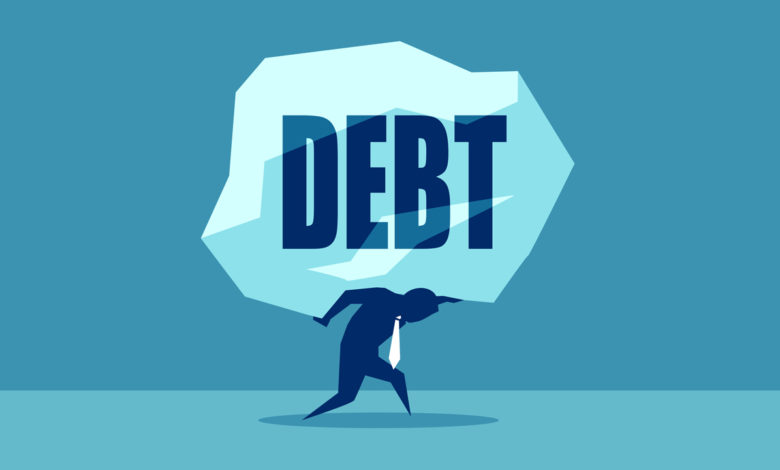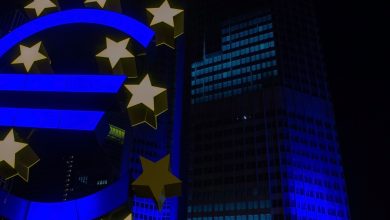What Central Banks Giveth They Taketh Away; Wave of Corporate Defaults on the Horizon

With a debt ceiling deal done, the threat of a US government default is off the table for the time being. But a wave of corporate defaults is on the horizon according to Deutsche Bank’s annual default study.
Deutsche Bank strategists Jim Reid and Steve Caprio say that corporate defaults will become “more normal” as we enter into a default cycle thanks to higher interest rates and a growing number of over-leveraged companies.
Our cycle indicators signal a default wave is imminent. The tightest Fed and ECB policy in 15 years is colliding with high leverage built upon stretched margins. And tactically, our US credit cycle gauge is producing its highest non-pandemic warning signal to investors, since before the GFC [Great Financial Crisis].”
The Deutsche Bank study projects defaults for US high-yield debt will peak at around 9% in late 2024. For comparison, the high-yield default rate was a mere 0.5% in 2021 and 1.3% in 2022.
The study predicts that the looming recession will create significant pain in the world’s credit markets, similar to the dot-com bust.
Corporate leverage is elevated. And global credit markets derive more of their revenue from manufacturing and the sale of physical goods than the real economy at large. Going forward, corporates will likely lose pricing power on their sale of physical goods, due to high inventory builds and a post-COVID demand shift from goods to services. But labor costs are likely to remain sticky, because of a shrinking working-age population and a desire for consumers to recoup nearly 2 years of negative real wage growth.”
Bank of America also forecasts a wave of defaults. According to its analysis, defaults could rise to $1 trillion if the US economy enters into a full-blown recession.
Meanwhile, Moody’s expects defaults on speculative-grade corporate debt globally will rise to 4.6% by the end of this year, up from 2.9% in March.
We’re already seeing a rise in corporate defaults. More companies globally defaulted in Q1 2023 than during any quarter since late 2020 at the peak of the government COVID lockdowns. Moody’s reported that 33 corporations it rates defaulted on their debts in the first quarter with 15 of those defaults coming in March.
What the Central Banks Giveth Central Banks Taketh Away
Central banks globally blew up this giant debt bubble with nearly two decades of artificially low interest rates. Central banks pushed rates to zero in the wake of the Great Recession and some banks, including the European Central Bank and the Bank of Japan took rates negative. Despite some efforts by the Federal Reserve to normalize rates in the mid to late 2010s, it never succeeded and had already started cutting rates due to shakiness in the economy before COVID. During the pandemic, central banks doubled down on their easy money policies.
The whole point of this monetary policy was to incentivize borrowing to “stimulate” the economy.
It worked.
Global debt hit a record $300 trillion at the end of 2022, according to data from S&P Global. That equals 349% leverage against global GDP and $37,500 of average debt for each person in the world.
Since 2000, non-financial corporate debt across America and Europe has grown from $12.7 trillion to $38.1 trillion, a 200% increase. Meanwhile, the percentage of US speculative-grade issuers of “B-” ratings and below doubled, to 36%, in September 2022 compared with September 2007.
Most people just assumed a low interest rate environment was the new normal. But in the wake of the COVID stimulus, price inflation finally caught up with the central banks, forcing them to raise interest rates.
Low-interest rates are the mother’s milk of a global economy built on easy money and debt. With interest rates rising, the bubbles are starting to pop.
What nobody seems willing to say out loud is that this problem falls squarely on the shoulders of governments and central banks. They implemented policies intended to incentivize the accumulation of debt. They created trillions of dollars out of thin air and showered the world with stimulus, unleashing the inflation monster. And now they’re trying to battle the dragon they set loose by raising interest rates. This will inevitably pop the bubble they intentionally blew up.
All of this was entirely predictable.
The US government is about to exacerbate the problem. With the debt ceiling out of the way, the US Treasury will have to go on a borrowing binge in order to replenish the cash reserves it spent while the government was up against the borrowing limit.
According to an analysis by Goldman Sachs, the US Treasury will likely need to sell around $700 billion in T-bills within six to eight weeks of a debt ceiling deal just to replenish cash reserves spent down while the government was up against the borrowing limit. On a net basis, the Treasury will likely have to sell more than $1 trillion in Treasuries this year.
The market may be able to absorb all of that paper, but it will almost certainly cause interest rates to rise even more as the sale drains liquidity out of the market.
This liquidity crunch will also spill over into the corporate bond market. The price of non-government debt instruments will have to fall as well in order to compete with Treasury bonds. That means the cost of borrowing will go up for everybody, making it harder for over-leveraged companies to refinance.
It’s likely that Deutsche Bank and other mainstream analysts are underestimating the extent of the default problem coming at us like a freight train.
Call 1-888-GOLD-160 and speak with a Precious Metals Specialist today!
Buka akaun dagangan patuh syariah anda di Weltrade.
Source link







